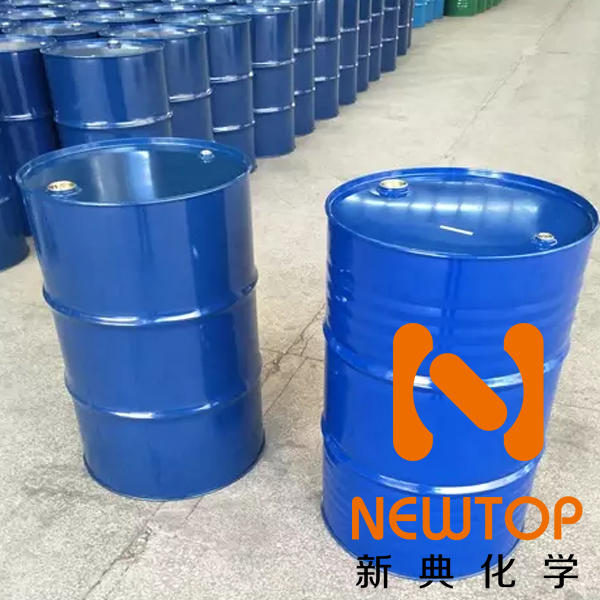Dabco foaming catalyst/polyurethane foaming catalyst NE300
Date:2023-11-17 Categories:Other products
Overview:
Product Name: Dabco NE300
Alias: N,N,N’-Trimethyl-N’-3-aminopropyl-bis(aminoethyl) ether, Dabco NE300, Amine catalyst for flexible molded foam NE300, Dabco foaming catalyst, Polyurethane foaming catalyst NE300
Product Description: Dabco NE300 non-volatile catalyst for flexible molded foam, N,N,N’-trimethyl-N’-3-aminopropyl-bis(aminoethyl) ether
Product Physical Properties:
Appearance: colorless liquid
Viscosity(25℃,mPa.s):9.2
Density(25℃,g/cm3):0.91
Water solubility: soluble in water
Flash point (PMCC,℃): 124
Hydroxyl value (mgKOH/g): 276

Brief introduction.
Dabco NE300 catalyst is a third generation non-emission (NE series) polyurethane foaming catalyst.The foam properties of Dabco NE300 catalyst chemically bonded to polyurethane foams in MDI or TDI systems solves the problems of odors and emissions associated with polyurethane catalysts used in the automotive industry that can cause windshield fogging and vinyl staining. Vinyl Staining.
Dabco NE300 catalyst can be used in conjunction with other non-volatile catalysts (e.g., Dabco NE1070) or with conventional volatile catalysts to reduce emissions and odors.
Dynamic headspace analysis by OEM VDA 278 method showed no emissions from the Dabco NE300 catalyst. These results demonstrate that the Dabco NE300 catalyst is fully bound to the foam. Vapor pressure measurements show that the volatility of Dabco NE300 non-volatile catalyst is significantly lower than current industry standards, which means that the catalyst in the foam line operates at a lower level of volatility.
Typical Physical Properties Table.
Appearance Light yellow transparent liquid
Specific Gravity 0.89
Viscosity @25°C mPa.s 9.2
Solubility in water @ 25°C Fully soluble
Flash point, ℃ 124
Characteristics
Non-volatile polyurethane foaming catalyst
No VOC emission
No vinyl staining
No windshield fogging
Stabilized masterbatch
Recommendations for Use.
Dabco NE300 Catalyst is recommended for use in any water-blown TDI or TDI/MDI polyurethane high resilient (HR) foam; and TDI/MDI or MDI-based cold-cured polyurethane foamed molding mat systems.Dabco NE300 Non-Volatile Catalyst is compatible with other commonly used polyurethane catalysts and additives and is miscible with polyols and polyol/water mixtures.
The recommended dosage of Dabco NE300 catalyst is 0.1-0.2pphp in MDI systems and 0.15-0.2pphp in TDI systems.
Product Usage:
Dabco NE300 is a non-emitting amine catalyst used to promote urea (water-isocyanate) reactions. It reacts into the polyurethane matrix and therefore produces no organic volatiles;
Dabco NE300 is suitable for all molded foam and high density foam applications to meet OEM emission regulations such as VDA278;
Dabco NE300 is also used in flexible block foam (polyether and polyester) applications to meet Certipur or LGA requirements;
Dabco NE300 is a non-emitting catalyst that replaces Dabco BL-11 catalyst;
Dabco NE300 can be used in any water-blown TDI or TDI/MDI high resilient (HR) foam as well as TDI/MDI or MDI-type cold cure molded polyurethane foam;
Dabco NE300 is recommended for use at 0.50-1 PPHP (per one hundred parts of polyol) in MDI systems and 0.4-0.7 PPHP in TDI systems.
Shelf Life.
Keep unopened for two years
Storage and Transportation:
Should be sealed and stored in a dry, cool and ventilated warehouse
Packaging:
200KG/drum Storage: it is recommended to store in dry and cool area with proper ventilation. Please fasten the packaging cover as soon as possible after the original packaging to prevent the mixing of other substances such as moisture and other substances that may affect the product performance. Store in a cool and dry place, keep the container sealed and avoid contact with oxides. Do not inhale dust and avoid contact with skin and mucous membranes. Smoking, eating and drinking are prohibited in the workplace. After work, shower and change clothes. Store contaminated clothing separately and wash before use. Maintain good hygiene practices. The company recommends that all polyurethane catalysts be stored in a dry, cool and properly ventilated area. All storage containers must be well sealed to avoid contact with water or other affected substances, which may alter the performance of the product in use. The storage temperature is 10°C to 30°C. Lower or higher temperatures are inappropriate and should be avoided if possible.
